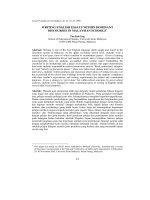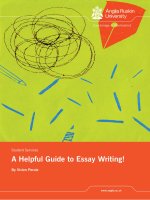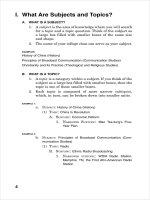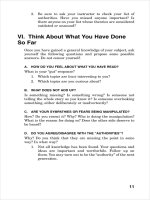36638 writing essays helpful worksheet
Bạn đang xem bản rút gọn của tài liệu. Xem và tải ngay bản đầy đủ của tài liệu tại đây (74.15 KB, 3 trang )
ESSAY: Useful language and writing tips
Suggested ESSAY outline:
Introduction
Introduce the subject of the essay and present both sides.
Paragraph 2
Present the arguments that agree with the statement (advantages/benefits) and support them with
examples.
Paragraph 3
Present the arguments that disagree with the statement (disadvantages/drawbacks) and support
them with examples.
Conclusion
Sum up and state your opinion.
1. Use linking words to give examples and opinion.
Openings (introduction)
o
Nowadays, many people
o
believe....
Some people think that .... but
o
others disagree.
Not everyone, however, is of the
Closings (conclusion)
o
o
o
o
o
In conclusion, ...
I am convinced that ...
To sum up, ...
I believe ...
In my opinion, ...
same opinion.
2. Use linking words to add a point:
o In addition to treating diseases, new medicines can sometimes help to save lives.
o New medicines can help to treat diseases as well as save lives.
3. Use linking words to express consequence:
o
o
o
o
As a result, ....
As a consequence, ...
Consequently, ....
Therefore, ....
4. Use linking words to contrast ideas:
Many people lie all the time. As a result / As a
consequence / Therefore / Consequently, nobody
believes them even when they tell the truth.
o
Although scientists are making an effort to find alternatives to animal testing, they
o
o
have not succeeded.
Despite their efforts, scientists have not yet found an alternative to animal testing.
While there was no conclusive evidence, most people thought he was guilty. (In this
example, ‘While’ is a synonym of ‘Although’)
5. DO NOT use:
o
o
o
o
o
phrasal verbs (e.g. take up something)
contractions (e.g. don’t)
questions (Would you ever....?)
Second person (you, your etc.)
First person (I, me, my etc.) BUT you can use first person either in the
introduction or conclusion to give your opinion (preferably in the conclusion).
6.









